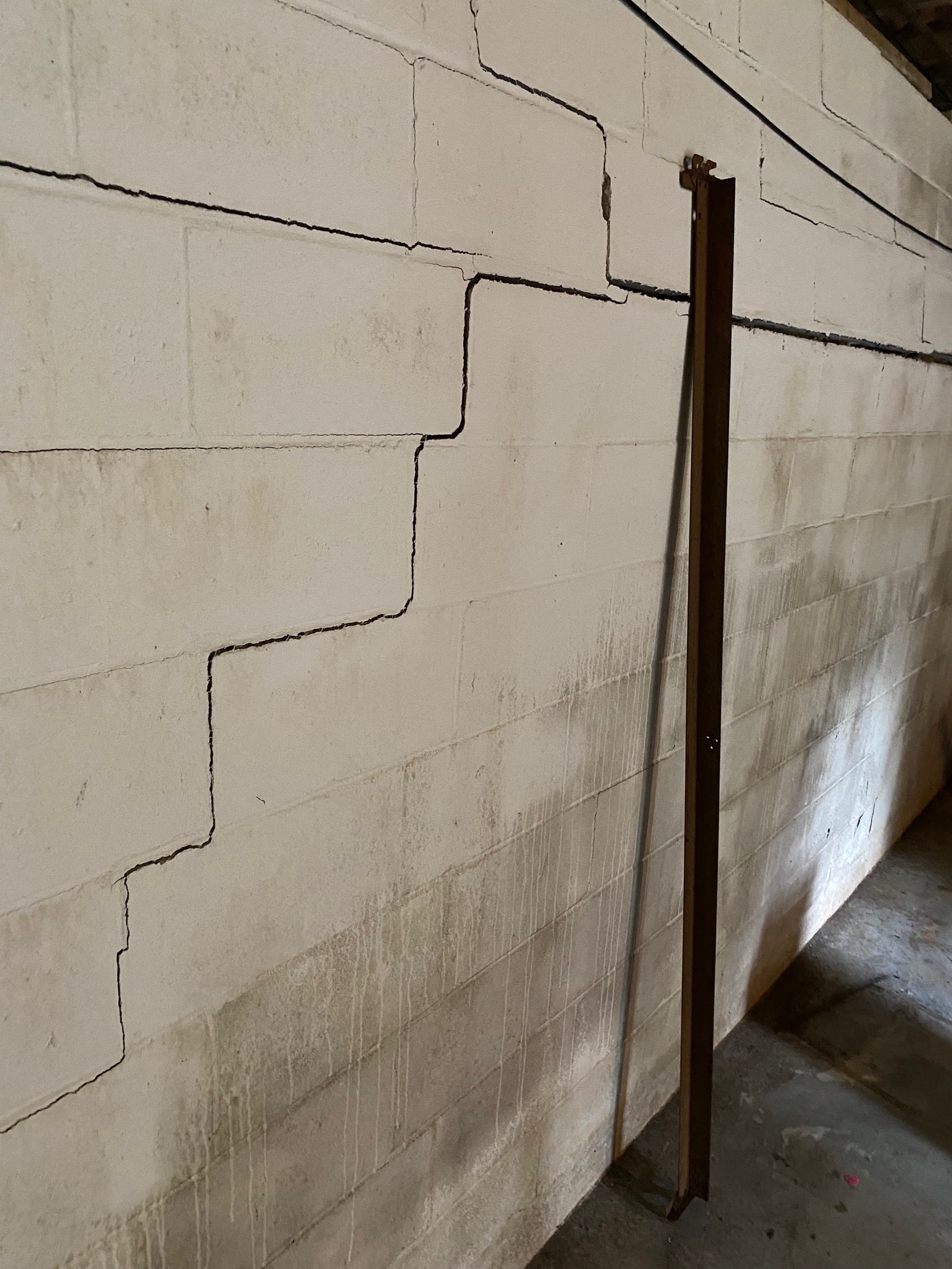
If you’ve ever faced the issue of a wet basement, you’re well aware of the importance of effective foundation crack repair methods. You might’ve considered options like epoxy or polyurethane foam injections, or perhaps interior and exterior waterproofing systems. Not to mention, soil grading also plays a vital role in mitigating water pressure around the foundation. But, how do you know which method is the best fit for your specific situation? Let’s explore these top five methods and help you make a more informed decision.
Key Takeaways
- The Epoxy Injection Method involves sealing cracks with epoxy, providing a waterproof barrier that’s stronger than concrete.
- Polyurethane Foam Injection fills and stabilizes larger cracks, expanding upon encountering moisture and accommodating slight foundation movement.
- Interior Waterproofing Systems, including drainage and wall coatings, manage water infiltration and protect the basement foundation.
- Exterior Waterproofing Solutions, such as effective drainage systems and soil grading, redirect water away from the home, reducing pressure.
- Waterproof coatings on the exterior and installing French drains can provide an additional layer of protection against groundwater.
Understanding Basement Moisture Issues
Ever wondered why your basement seems to be perpetually damp? The answer is lurking in two places: moisture sources and water drainage.
Moisture sources are the primary reason for your basement’s dampness. They can be internal, like your washing machine, or external, such as rain or groundwater around your house. When these sources introduce more moisture than your basement can handle, it results in excessive dampness.
Water drainage is another critical factor. If your house’s drainage system isn’t working effectively, water may not be channeled away efficiently. This water accumulates around your foundation, seeping into your basement and causing dampness.
Here’s the technical bit. Your basement walls are made of porous materials, like concrete or stone. When water accumulates outside these walls, it doesn’t just stay there. It seeps through, adding to your basement’s moisture levels.
Understanding these moisture sources and water drainage issues is your first step towards a dry basement. Once you’ve identified them, you’ll be better equipped to select the right foundation crack repair method, ensuring your basement remains dry and healthy.
Epoxy Injection Method
One highly effective strategy for repairing foundation cracks is the Epoxy Injection Method. This method involves injecting epoxy into the cracks to seal them, preventing further water intrusion. The epoxy benefits are numerous, providing a strong, waterproof barrier that adheres well to the concrete, and it’s even stronger than the concrete itself when cured.
The repair process begins by cleaning out the crack to remove any loose debris. Next, the epoxy is mixed and prepared for injection. It’s crucial to follow the manufacturer’s instructions for this step to ensure the epoxy properly binds to the concrete.
Here are some key points about the Epoxy Injection Method:
| Feature | Benefit | Consideration |
|---|---|---|
| Strong bond | Epoxy adheres well to concrete, creating a solid, robust seal. | The surface must be clean for a good bond. |
| Waterproof barrier | Once cured, epoxy resists water intrusion. | Cure time varies; patience is essential. |
| Long-lasting | Epoxy typically lasts longer than other repair methods. | Cost can be higher but worth it for the long-term solution. |
Polyurethane Foam Injection
If you’re dealing with larger cracks, you might want to consider the Polyurethane Foam Injection method. This technique is a high-performing solution that provides both crack repair and foundation stabilization.
It’s particularly effective for wet basements where water seepage is a concern. The process involves injecting a liquid polyurethane resin into the crack. As the resin encounters moisture, it starts a chemical reaction that causes foam expansion. The foam fills the crack completely, from front to back and top to bottom, ensuring a thorough sealing that’s superior to many other methods.
What sets Polyurethane Foam Injection apart is its flexibility. Unlike rigid repair methods, the foam can accommodate slight movement of your foundation without losing its sealing properties. This feature is crucial for long-term foundation stabilization, especially in areas prone to soil shifting.
As you can see, the Polyurethane Foam Injection method provides a comprehensive solution for foundation crack repair. However, it’s important to remember that this method requires professional expertise for correct application.
If not applied properly, the foam can over-expand or under-expand, leading to less effective results. So, always rely on experienced professionals for this method.
Interior Waterproofing Systems
Switching gears, let’s now delve into Interior Waterproofing Systems.
These systems are crucial for managing water infiltration in your basement. They consist of various components, each playing a unique role in keeping your basement dry.
Interior waterproofing systems involve the installation of interior drainage and specific wall coatings. They primarily work by redirecting water that seeps into your basement, preventing it from causing damage.
Here are the primary elements of an interior waterproofing system:
- Interior Drainage: This system is installed beneath your basement floor, near the foundation. It collects water that seeps in and redirects it away from the basement, typically towards a sump pump.
- Wall Coatings: These are applied to the interior walls of your basement. They serve as a barrier, preventing water from seeping through the walls and into your basement.
- Sump Pump: A sump pump is often part of an interior waterproofing system. It pumps out the water collected by the interior drainage system, keeping your basement dry.
In essence, interior waterproofing systems help you manage water infiltration effectively, protecting your home’s foundation and keeping your basement dry.
They’re an integral part of foundation crack repair for wet basements.
Exterior Waterproofing Solutions
While interior waterproofing systems offer a robust solution for managing water infiltration inside your basement, tackling the problem from the outside can be equally, if not more, effective. Exterior waterproofing solutions serve as the first line of defense against water damage and provide an essential shield for your home’s foundation.
An integral part of any exterior waterproofing solution is implementing effective drainage systems. These systems help channel water away from your home, reducing the pressure on your foundation. Similarly, soil grading plays a significant role. By grading the soil to slope away from your house, you’ll be creating a natural barrier against water infiltration.
Let’s take a look at a brief comparison between different exterior waterproofing solutions:
| Method | Effectiveness |
|---|---|
| Drainage Systems | High |
| Soil Grading | Moderate to High |
| Waterproof Coatings | Moderate |
| French Drains | High |
| Sump Pumps | High |
Frequently Asked Questions
What Is the Average Cost of These Foundation Crack Repair Methods?
You’re probably wondering about the average cost of foundation crack repair methods. Well, it’s not a simple answer.
Cost factors include the severity and location of the cracks, plus the repair method chosen. Typically, you’re looking at an average range of $500 to $3,000.
However, it’s crucial to get specific repair estimates from professionals. Remember, neglecting these issues can lead to more extensive, costly repairs down the line.
Are There Any DIY Solutions for Foundation Crack Repair in Wet Basements?
Yes, there are DIY solutions for foundation crack repair in wet basements.
You’ll need DIY materials like hydraulic cement or crack sealing epoxy. First, clean the crack and surrounding area. Then, apply the hydraulic cement or epoxy, ensuring it’s pressed into the crack and smoothed over the surface.
What Precautionary Measures Can Prevent Foundation Cracks in Basements?
You can prevent foundation cracks in basements with regular preventive maintenance.
It’s crucial to keep your gutters clean and ensure the soil around your home slopes away to prevent water accumulation.
You should also install effective drainage solutions.
Regular inspections can identify minor issues before they become significant problems.
Always remember, a little maintenance can save you from expensive foundation crack repairs in the future.
How Long Does It Generally Take to Repair a Foundation Crack?
The duration to repair a foundation crack can vary.
It’s contingent on the size and severity of the crack, but generally, it takes about 2-3 days.
The process involves inspecting the crack, preparing it for repair, and injecting a solution to seal it.
It’s essential to remember that the aim isn’t just patching the crack – it’s also about ensuring long-term foundation stability.
You’ll need patience, as rushing won’t yield a lasting solution.
Does Home Insurance Typically Cover the Cost of Foundation Crack Repairs?
Usually, standard home insurance policies don’t cover foundation crack repairs.
It’s seen as a maintenance issue that you’re expected to prevent. However, if the damage resulted from a covered peril like a fire, you might be covered.
Coverage limitations vary widely, so it’s crucial to review your policy thoroughly.
If you’re unsure, it’s best to contact your insurance provider directly to understand what’s covered and what’s not in your specific case.
Conclusion
You’ve explored the top five methods to tackle your wet basement issues. Whether it’s the robust epoxy injection or the expansive polyurethane foam, the choice depends on your unique situation. Interior or exterior waterproofing systems offer proven solutions, while soil grading is effective in reducing water pressure. With a clear understanding of each method’s strengths, you’re well-equipped to make an informed decision. Remember, the goal is lasting protection from moisture, providing a dry, safe basement for years to come.

Seal-tite Basement Waterproofing Co. is a full service basement environment contractor. We carry an A+ Better Business Bureau rating. We repaired over 40,000 homes and structures in Virginia, West Virginia, Tennessee, and North Carolina. We are fully insured and licensed. We have worked in all types of locations, including residential and commercial locations, government agencies, colleges, hospitals, churches, and condo associations.
Seal-tite® offers a lifetime transferable warranty. We carry a Class A Contractor’s License and we are fully insured. Our satisfied customers range from government agencies to businesses, hospitals, colleges, churches, and thousands of homeowners. Your home is probably the single largest investment you will make in your lifetime. Don’t wait, call Seal-tite® to help make your home dry, safe and livable.

